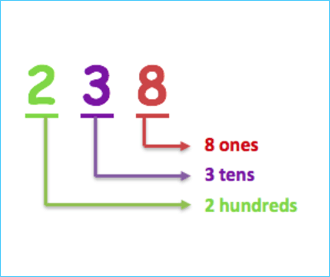What's My Number? - A Place-Value Guessing Game
Players: 2
Ages: 8 and up
Cost: Free!
Math Ideas: Place Value, logical deduction
Questions to Ask:
What do you know about the number so far?
Could a 3 be in the number? How do you know?
Do you want me to be the guesser?
As a kid, I always loved the game show Lingo. In the game, players would have five chances to guess a five-letter word. After each guess, their word would light up to let them know which letters were correct, and which letters were in the word but in the wrong position.
These little deduction puzzles are a great way for kids to think strategically, so I perked up when I found a nice mathematical variation:What's My Number?
This is another one of those games that you can pull out in a waiting room or at a restaurant, rather than simply surrendering your phone to your kids. All you need is a piece of paper and a pencil.
How to Play
There are a couple of ways to play What's My Number?
In the place value variation, you secretly choose a four-digit number. As an example, we will use 1,478. Your child then gets out a piece of paper to write their initial guess. Let's say they guess 3,451.
As you can see, they've correctly guessed 4 in the hundreds place. In this game, a correct digit is known as "hot." Your child also guessed a 1, but they put it in the ones place rather than the thousands place. This type of digit is known as "warm."
So your response to your child would be to say "The digit in the hundreds place is hot. The digit in the ones place is warm. The other two digits are cold."
Now it's your child's turn to do some thinking! Notice that you don't color in or indicate on the paper which digits are hot or warm. That's your child's job! They have to use their understanding of place value to find the digits that are correct and the ones that need to be changed or moved.
Your child guesses again, and again you tell them which digits are hot and which are warm. Keep playing until they guess your number!
In the hidden variation, you choose a three-digit number, and your child tries to guess. This time, you don't tell them the place value of the hot or warm digits. So let's say you choose 389 and your child guesses 819. You would say "one hot and one warm" but wouldn't be any more specific. Now the game is a whole new challenge! They have to use that information to guess, but they don't know which digits are correct and which aren't.
If this variation sounds a little familiar, you might be remembering my write-up of Mastermind from last year. In that game, you are guessing a four-color code rather than a number, but otherwise the underlying strategy and math is the same.
Where's the Math?
In the place value game, the math is fairly explicit. You indicate the place value of each digit, and your child uses that information to make their next guess.
Beyond that, your child will be using all sorts of deduction skills to narrow down their choices. There are hundreds, or even thousands, of possible guesses (depending on the variation you're playing). In order to make this game anything other than a slog, your child will have to draw conclusions based on the information you provide about each guess.
In both variations, your child needs to keep track of their earlier guesses and the information you gave them. This may not seem like a mathematical skill, but it is! Creating a structured method for recording information is absolutely mathematical, as it requires forethought about how they will use the information going forward.
Questions to Ask
Lots of kids will start out by guessing more or less at random. In this situation, I think it's valuable to stop after the first three guesses and ask "What do you know for sure about the number so far?"
No matter what your child has guessed, they've learned some valuable information. Let's say they guessed 1378 on the first guess, and you told them that all the digits were cold. Well, now they know that the number can't contain any of those four digits! Similarly, if they guess 2256 and are told that the tens are warm, then they know that 2s and 6s are out and the 5 needs to be moved elsewhere.
If your child doesn't make these connections immediately, it's worth delving deeper. You can ask "Could the number contain a 3? Why?" Even if your child knows the correct answer, they might struggle to explain why. Just be patient and give them a chance to formulate their thoughts. They will improve over time.
If you've played the game a couple of times, it's time for the best question yet! "Do you want me to be the guesser?" If your child is feeling confident in their own guessing abilities, they might relish the chance to give you clues and watch you struggle.
They'll be using the same math ideas, but the thought process will be significantly different. Not only that, but you can model your thinking out loud as you work your way through the guesses. If your child listens to your reasoning for a couple of turns, they are sure to pick up on some good strategies.





